Though I will be using the Rider Waite Tarot deck, for my blog lesson series on learning tarot, you can but don’t have to use this particular deck.
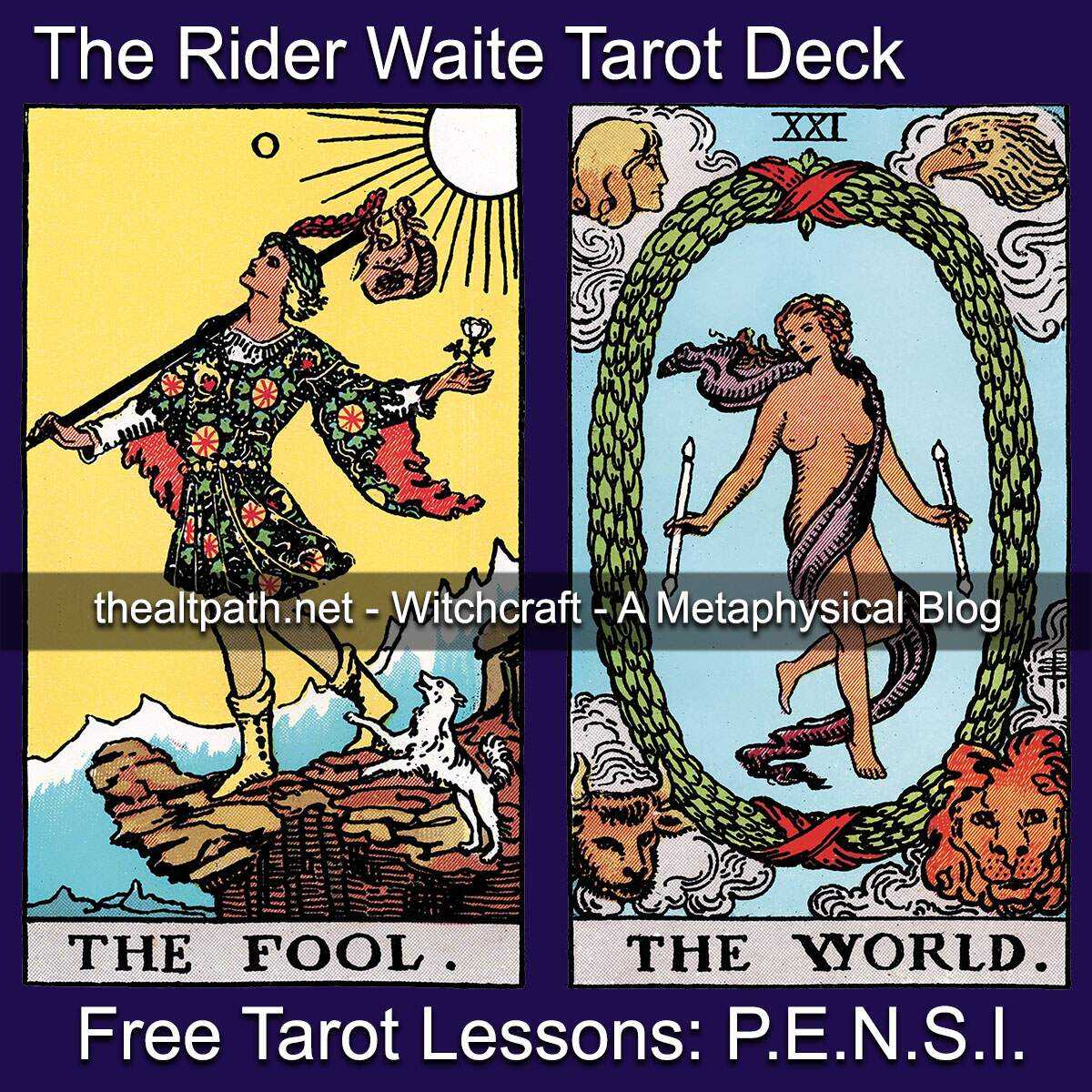 I have been reading Tarot since my my pre-teens and professionally for years and have taught many classes. Right now my go-to deck is the The Witches’ Tarot by Ellen Dugan. It is gorgeous, expressive, and full of symbolism that clicks with me instantly. However, for teaching purposes, I am setting it aside and reaching for the Rider Waite Tarot. Why? Because it is familiar to most people, it has survived over a century, and even people who do not know Tarot have seen its imagery somewhere.
I have been reading Tarot since my my pre-teens and professionally for years and have taught many classes. Right now my go-to deck is the The Witches’ Tarot by Ellen Dugan. It is gorgeous, expressive, and full of symbolism that clicks with me instantly. However, for teaching purposes, I am setting it aside and reaching for the Rider Waite Tarot. Why? Because it is familiar to most people, it has survived over a century, and even people who do not know Tarot have seen its imagery somewhere.
If you are serious about wanting to learn Tarot, these lessons using the Rider Waite Tarot is the perfect starting point (but you can use any fundamental deck for these lessons. It is not the only deck worth using, but it is the one almost everyone recognizes. This makes it an ideal shared language for beginners and seasoned readers alike. You and I will explore it together in a way that is structured but not suffocating.
Since the creation of the Rider Waite Tarot deck, there have been many versions published.
My method of learning tarot works with any fundamental deck, so you don’t need to purchase a deck unless you need or want to. A fundamental deck’s pips are based on (earth/pentacles, air/swords, fire/wands and cups/water).
A Brief History of The Rider Waite Tarot Deck
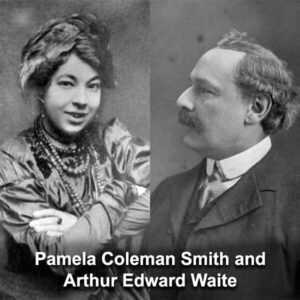 Let’s get something straight: the Rider–Waite Tarot is not just some dusty old relic. Published in 1909 by the Rider Company, it was groundbreaking in its time. Arthur Edward Waite, a member of the Hermetic Order of the Golden Dawn, guided its creation, while Pamela Colman Smith illustrated it with unmatched detail. I love the Original Rider Waite Deck for its pastel colors.
Let’s get something straight: the Rider–Waite Tarot is not just some dusty old relic. Published in 1909 by the Rider Company, it was groundbreaking in its time. Arthur Edward Waite, a member of the Hermetic Order of the Golden Dawn, guided its creation, while Pamela Colman Smith illustrated it with unmatched detail. I love the Original Rider Waite Deck for its pastel colors.
Most decks before this one treated the Minor Arcana like afterthoughts. They were often just suit symbols without a scene or story. Smith changed that. She gave every card a full, vivid illustration. Now, even a beginner could start piecing together meanings visually rather than memorizing dry lists.
Published in 1909 by the Rider Company, making it one of the earliest fully illustrated tarot decks available to the public.
Artwork by Pamela Colman Smith, whose symbolic choices still influence Tarot artists today.
Guided by Arthur Edward Waite, ensuring every card dripped with esoteric meaning.
Minor Arcana illustrated, which was revolutionary at the time.
Foundation for countless modern decks, including my beloved Witches’ Tarot.
The Rider Waite Tarot Deck: Sympathetic to its Time
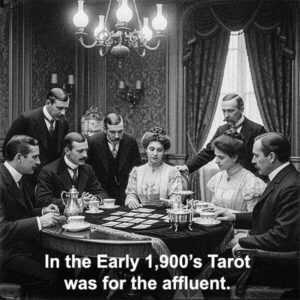 Now, let’s address the elephant in the reading room: when the Rider Waite Tarot deck was first released, it was not something the average working-class household would necessarily buy on a whim. Books and leisure time were luxuries. While it was printed for the public, in practice it was more accessible to people with the time and money to study it. Over time, of course, it became the standard, and now anyone can grab a copy and start learning.
Now, let’s address the elephant in the reading room: when the Rider Waite Tarot deck was first released, it was not something the average working-class household would necessarily buy on a whim. Books and leisure time were luxuries. While it was printed for the public, in practice it was more accessible to people with the time and money to study it. Over time, of course, it became the standard, and now anyone can grab a copy and start learning.
In other words, it wasn’t really affordable for many people. When certain cards talk about fortune, building an asset or making money, it spoke to the more affluent, not the average joe. So, every deck is sympathetic to its time and to the creator(s) of the deck. So just keep that in mind, each deck has nuances and is sympathetic. Again, with my method you can learn to read any fundamental deck.
 Sign up now, free and secure, don’t miss out on free Tarot lessons, witchcraft, spells, rituals, and money-saving codes and coupons for our website and physical store! Signing up now keeps you up-to-date with lessons.
Sign up now, free and secure, don’t miss out on free Tarot lessons, witchcraft, spells, rituals, and money-saving codes and coupons for our website and physical store! Signing up now keeps you up-to-date with lessons.
Learning Tarot: The P.E.N.S.I. Method
I will not drown you in endless key phrases you will forget. My approach, which I call P.E.N.S.I., teaches you to build association with your cards. If you want to learn Tarot without losing your mind in flashcard hell, this is your method. And it works for any fundamental deck, not just the Rider Waite tarot deck.
This method relies very little on memorizing, instead teaches association so you don’t have to remember all the keywords and phrases for 78 cards.
P.E.N.S.I. – See The Full First Lesson.
P – Position: Position is simply where the card lands in a spread, and it can change the meaning drastically. That said, we are not diving into spreads yet. Trust me, spreads deserve their own spotlight. We will get to them later in the series, so for now, just know that position matters and will be our first step when we do reach that part of the journey.
E – Element: In Tarot, Earth, Air, Fire, and Water are more than poetic flourishes. They are the backbone of the suits. Earth is the material world, Air is the mind and communication, Fire is passion and drive, and Water is emotions and spirituality. Knowing the Element of a card gives you a huge head start before you even look deeper.
N – Numerology: Numerology in Tarot is not about calculating your life path number. It is about noticing how numbers carry meaning across the suits. Ones signal beginnings, Fives bring sorrow, loss, regrets and Tens bring completion or closure. By blending numerology with the Element, you instantly get a layered understanding.
S – Symbolism: Symbolism is where Pamela Colman Smith’s genius shines. She was not tossing random imagery into the mix. Every robe color, every hand gesture, every mountain in the background matters. If you want to learn Tarot well, you have to train yourself to notice these details. They will give your readings depth without requiring you to look up definitions every time.
I – Intuition: Intuition is your personal insight prompt. All the previous steps of P.E.N.S.I. come together opening the door for astounding insight.
Adding Reversals and Spell-Work
Once you are comfortable with P.E.N.S.I., we will add two more layers.
Reversed Meanings – When a card is upside down, it changes the energy. Sometimes it is a delay, sometimes it is resistance, sometimes it is a full-on warning. Again, this works with the Rider Waite tarot deck but also all other fundamental decks.
Spell work – Each card lesson will include a tarot spell. These will be real, usable spells, not vague Pinterest fluff. You will learn how to work with the card’s energy in your magical practice.
 Why My Method Works
Why My Method Works
The P.E.N.S.I. method does not force you to pick between structured knowledge and intuitive reading. It teaches you both at once. You get a method you can repeat without getting stuck in a rut, and it works whether you are doing quick daily pulls or full spreads.
It is also ridiculously adaptable. Once you know it, you can use it with any fundamental deck, whether you stick with Rider–Waite Tarot or other deck of choice.
Where We Go From Here
Next, we will tackle the 40 pip cards of the Minor Arcana. These are the numbered cards in the suits of Pentacles, Swords, Wands, and Cups. Each lesson will follow the same P.E.N.S.I. structure, plus reversals and spell work, so you can see the process in action.
Later, we will dedicate an entire section to spreads. That is when position will finally take the stage, and you will see how it interacts with everything else you have learned.
By the end of this series, you will not just recognize the Rider Waite Tarot deck; you will speak its language. Or, your chosen deck’s language. You will be able to learn Tarot in a way that feels natural and alive. You will have the skills to read for yourself, for others, and even to work magic with your cards.
Connect with us and more of the pagan community on Instagram, Facebook (Meta) or TikTok.
Copyright © 2025 All rights reserved

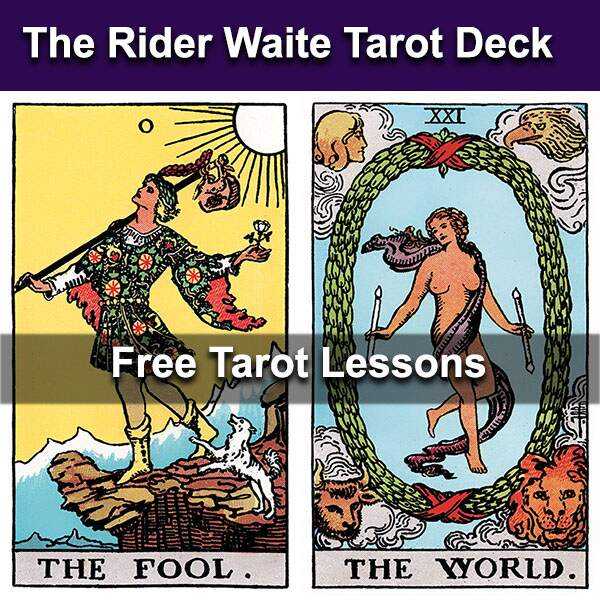
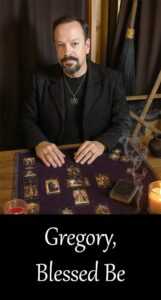 Why My Method Works
Why My Method Works



I know were all into tarot readings and stuff, but what if the Rider Waite Tarot Deck is just a bunch of pretty pictures with no real mystical power? Like, its just a cool art project from back in the day. Thoughts?
Maybe the power lies in the symbolism and interpretation, not mysticism. Different strokes!
The history is fascinating! I’m looking forward to learning about the tarot spells.
Hello again, 😉 I’ll be including two spells per card, one upright and one reversed. Once you get to know the archetypes, and the elements, numerology and symbolisms (3 of 5 parts of the P.E.N.S.I. method) it becomes easier to design and cast your own tarot spells. Yes, the history is fascinating! There are some much older decks than Rider-Waite, but this one sort of catapulted tarot into the public conscious in a big way. As decks became more and more affordable, the Rider-Waite deck was very much out front. Enjoy the reads, Blessings! 🙂
Guys, I know its controversial, but what if we used the Rider Waite Tarot Deck to make decisions in our daily lives? Like, Should I order pizza or cook dinner? Let the cards decide! #TarotLife 🃏🍕
Thats just superstition, not a practical way to make decisions. Trust your instincts instead.
Hey Elan, 🙂 Tarot and readings are about more significant directions, changes and circumstances in life. Funny, yes, but your quip is just a little ridiculous guy.
I know this might sound crazy, but what if the Rider Waite Tarot Deck is actually a portal to another dimension? I mean, the symbolism is so deep, it could be a coded message from beyond! 🤯🔮
Interesting theory, but lets keep our feet on the ground with tarots symbolic interpretations.
I find it fascinating how the Rider Waite Tarot Deck reflects the societal norms of its time. I think modern Tarot interpretations should evolve to fit our current cultural context.
Wow, did you guys know the Rider Waite Tarot Deck was created over a century ago? Crazy how it still resonates today! I’ve been trying this method of learning tarot, I like it so far and it’s making sense to me how it applies. I hate memorizing, so this is cool.
Thank Eileen, I am really glad PENSI is making sense for you. Rock on.